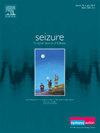抗癫痫药物诱发的超敏反应:来自一个大型医疗系统的数据。
IF 2.7
3区 医学
Q2 CLINICAL NEUROLOGY
引用次数: 0
摘要
背景和目的:有关对个别抗癫痫药物(ASM)的超敏反应(HR)以及对其他 ASM 的反应的数据往往受到样本量的限制。这些数据对于帮助临床医生确定治疗癫痫患者(PWE)的初始和后续抗癫痫药物至关重要。我们的研究使用了一个非常大的数据集,试图量化 31 种不同 ASM 的 HR 发生率。我们还试图研究某些 ASM 对是否与较高的 HR 频率相关:方法:我们使用 Epic 电子病历系统中的 Slicer-Dicer 工具分析了肯塔基州一家大型医疗保健系统在 2012 年至 2022 年期间就诊的患者,这些患者有 31 种不同 ASM 的接触记录。结果发现了这些ASM的HR发生率,包括单药或成对药物的发生率,以及按性别和ASM结构分层的HR发生率:结果:共分析了 573,571 名患者,967,168 次接触。苯巴比妥的HR发生率最高,为12.9%。使用芳香族 ASM 与患者对其他 ASM 的 HR 最有关联。女性更有可能对所研究的 13/31 种 ASM 发生 HR,而男性则更有可能对拉科沙胺发生 HR。与非芳香族 ASM 相比,芳香族 ASM 更有可能与 HR 相关(p < 0.0001)。卡马西平及相关药物奥卡西平和艾司卡西平与最多的药物配对相关,在这些药物配对中,患者在任何时间点对两种药物都有HR:我们的数据揭示了对 ASMs 产生 HR 的重要模式,这对治疗 PWE 的临床医生可能很有价值。临床医生在对服用过芳香族 ASM(尤其是卡马西平、奥卡西平或艾司卡西平以及苯巴比妥)的患者开始服用新的 ASM 时,应密切监测 HR。本文章由计算机程序翻译,如有差异,请以英文原文为准。
Antiseizure medication-induced hypersensitivity reactions: Data from a large healthcare system
Background and Objectives
Data on hypersensitivity reactions (HR) to individual anti-seizure medications (ASMs), and reactions to additional ASMs, is often limited by sample size. This data is vital in helping clinicians identify initial and subsequent ASMs to use in treating persons with epilepsy (PWE). Using a very large dataset, our study attempts to quantify the occurrence of HR across 31 different ASMs. We also attempt to investigate whether certain pairs of ASMs are associated with a higher frequency of HR.
Methods
The Slicer-Dicer tool in the Epic electronic medical records system was used to analyze patients seen between 2012 and 2022 at a large healthcare system in Kentucky with recorded exposures to 31 different ASMs. Incidence of HR with these ASMs were identified, both with single drugs or pairs of drugs, as well as incidence of HR stratified by sex and ASM structure.
Results
A total of 573,571 patients with 967,168 exposures were analyzed. Phenobarbital had the highest rate of HR at 12.9 %. Usage of aromatic ASMs were most associated with patients having HR to other ASMs. HR to 13/31 studied ASMs was more likely to occur in females, while HR was more likely in males with lacosamide. Aromatic ASMs were more likely (p < 0.0001) to be associated with HR compared to non-aromatic ASMs. Carbamazepine and the related drugs oxcarbazepine and eslicarbazepine were associated with the greatest number of drug pairings in which the patient had HR to both medications at any time point.
Discussion
Our data reveals important patterns in HR to ASMs that may be valuable to clinicians treating PWE. Clinicians should monitor closely for HR when beginning a new ASM in a patient who has taken an aromatic ASM, especially carbamazepine, oxcarbazepine, or eslicarbazepine as well as phenobarbital.
求助全文
通过发布文献求助,成功后即可免费获取论文全文。
去求助
来源期刊

Seizure-European Journal of Epilepsy
医学-临床神经学
CiteScore
5.60
自引率
6.70%
发文量
231
审稿时长
34 days
期刊介绍:
Seizure - European Journal of Epilepsy is an international journal owned by Epilepsy Action (the largest member led epilepsy organisation in the UK). It provides a forum for papers on all topics related to epilepsy and seizure disorders.
 求助内容:
求助内容: 应助结果提醒方式:
应助结果提醒方式:


